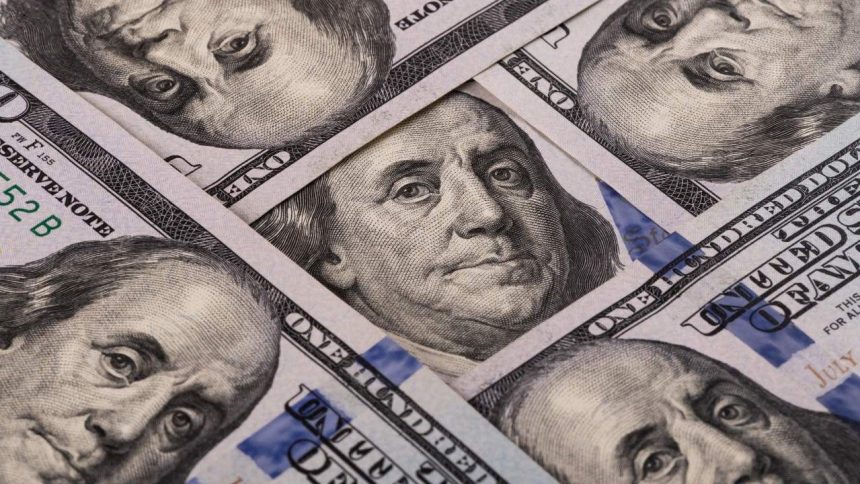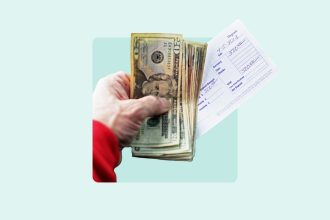Key takeaways
- Despite political pressure from President Trump, the Federal Reserve is expected to hold interest rates steady at its July 29-30 meeting, coming off the heels of elevated inflation in June.
- High-yield savings accounts remain an attractive option, with several top accounts still offering APYs well above 4 percent.
- Given that inflation is still elevated, and the Fed is maintaining a cautious stance, now is a strong time for savers to take advantage of elevated deposit rates before any potential rate cuts later this year.
With the Federal Reserve’s Federal Open Market Committee (FOMC) meeting set for this week, happening on July 29-30, investors and savers alike are keeping a close eye on interest rates. But despite the upcoming gathering of central bank officials, experts anticipate the Fed will hold rates steady, for now.
After months of economic crosswinds — from rising inflation to tariff policy uncertainty — the Fed has made it clear that it’s still waiting for stronger signals before making a move. That means deposit rates, including those tied to Bankrate’s best high-yield savings accounts (HYSAs), are likely to remain elevated, at least for the near future.
With annual percentage yields (APYs) still sitting well above four percent at many institutions, this remains an attractive window for savers to capitalize on some of the best deposit yields we’ve seen in years.
Today’s best savings account rates
Two banks currently offering standout yields are Peak Bank and Varo Bank.
Varo Bank offers a headline-grabbing APY of 5 percent, but there’s a catch: That top rate only applies to the first $5,000 in your account, and only if specific requirements are met. Additional balances earn just 2.50 percent APY, which is much lower than the other offers on this list.
Peak Bank, the online division of First Idaho Bank, is currently offering 4.44 percent APY on new savings accounts. While Peak Bank is not currently tracked by Bankrate’s editorial team, it remains one of the most competitive offers in the broader marketplace.
Here’s a look at the most competitive rates currently monitored by the Bankrate editorial team, which includes accounts that come with few restrictions and are available nationwide.
Note: Annual percentage yields (APYs) are as of July 28, 2025. APYs for some products may vary by region.
The latest news from the Federal Reserve
All eyes are on the Fed as it heads into its next FOMC meeting this week. Despite mounting political pressure and a fresh uptick in inflation, experts generally believe the Fed will hold its benchmark interest rate steady for now.
Inflation rose in June, with the Consumer Price Index (CPI) climbing 2.7 percent year-over-year. The central bank has long maintained that it needs to see a clear and sustained trend towards lower inflation before it continues cutting rates. But complicating that decision is the intensifying pressure coming from the White House.
President Donald Trump has repeatedly criticized Fed Chair Jerome Powell in recent weeks and even floated the idea of removing Powell from his post — citing alleged overspending on Federal Reserve office renovations as potential justification.
Although Trump later walked back the suggestion, saying a firing is “highly unlikely,” the comments have added to the uncertainty surrounding the Fed’s next moves and raised questions about the central bank’s independence.
Adding to this uncertainty is the ever-shifting tariff deadline, which is now set for Aug. 1 — just two days after the bank wraps up its July meeting.
The Federal Reserve is expected to keep its benchmark interest rate steady at least through September, despite political pressure that runs counter to the Fed’s design as an independent institution.
— Mark Hamrick, Senior Economic Analyst | Bankrate
Why high-yield savings still shine in today’s economy
Even as inflation ticks higher, HYSAs remain a powerful tool for preserving purchasing power. Unlike traditional savings accounts, which still offer rates as low as 0.01 percent APY at major brick-and-mortar institutions, HYSAs let your money grow at a pace that can outpace inflation in real terms.
HYSA rates have remained high thanks to an elevated federal funds rate, which the Fed hiked to combat post-pandemic inflation. Since inflation ticked up in June, it’s likely the U.S. central bank will leave the federal funds rate unchanged, as Fed chair Powell has reiterated time and again that the Fed seeks to “prevent a one-time increase in the price level to become an ongoing inflation problem.”
Did you know?
One of the Federal Reserve’s main tools for fighting rampant inflation is the federal funds rate. When inflation goes up, the central bank tends to hike the federal funds rate, which in turn has the indirect effect of heightening deposit yields. Learn more about how the Fed controls interest rates with Bankrate’s guide: What is the federal funds rate?
As such, if the federal funds rate remains unchanged this week, we can expect to see savings account rates remain elevated for some time to come — at the very least, until the Fed meets again in mid-September.
“If there’s one piece of common-sense financial advice for individuals and households right now, it’s this: take advantage of high-yield savings,” Hamrick says. “Too many Americans still under-prioritize savings, especially emergency savings. A high-yield savings account is one of the simplest, most effective tools to help address that gap.”
What to consider before opening a HYSA
Not all high-yield savings accounts are created equal. In addition to the APY, look for:
- No monthly fees or minimum balance requirements: Fees can quickly erode your earnings, and minimum balance requirements can make it harder to “set and forget” automated savings.
- Low minimum deposit requirements: Ensure you can open and fund the account easily.
- FDIC or NCUA insurance: This guarantees your deposits up to $250,000 per institution, per depositor.
- User experience: An easy-to-navigate website or mobile app can make managing your money a smoother experience.
Be cautious of promotional rates that drop significantly after a set time period, or those that only apply to certain balances before dropping off substantially.
Bottom line
As the Fed prepares to meet this week, all signs point to a continued pause in interest rate changes — which may be good news for savers. With high-yield savings rates still elevated, now is an ideal time to open or fund an account before the rate environment eventually shifts.
If the Fed decides to cut rates later this year, today’s strong yields could be harder to find in the months ahead. Taking advantage of a HYSA now can help lock in value while keeping your cash flexible for whatever comes next.
Why we ask for feedback
Your feedback helps us improve our content and services. It takes less than a minute to
complete.
Your responses are anonymous and will only be used for improving our website.
Help us improve our content
Read the full article here
















